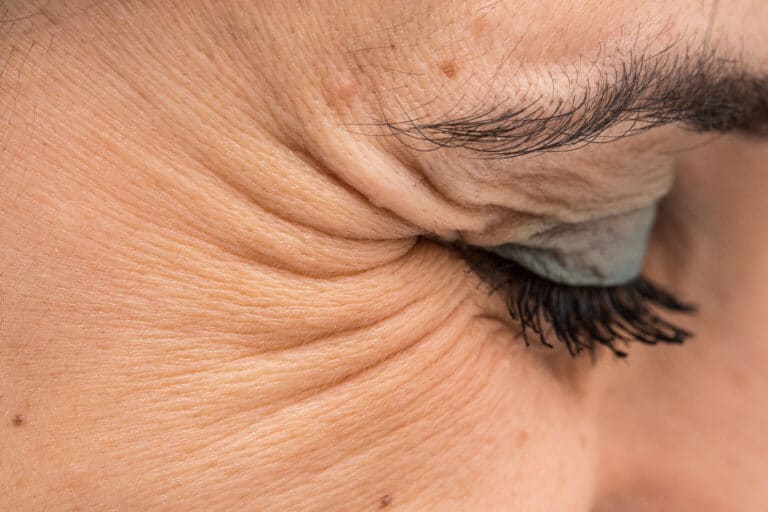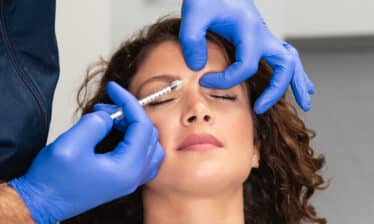Wrinkles and lines around the eye are one of the first signs of aging for many people. Crow’s feet, as they are commonly known, are caused by the movements of the face. Using sunscreen to protect the delicate skin around the eyes and applying anti-aging skincare products can slow the progress of crow’s feet. However, to really minimize them, you may need injectable skin treatments from a qualified injector.
What Are Crow’s Feet?
Crow’s feet, also called lateral canthal lines, are the lines or wrinkles that appear at the outside corner of your eyes. They are expression lines or dynamic wrinkles, which means they appear when your facial muscles move. They may be most visible when you smile or squint. Over time, crow’s feet may become deeper and more apparent due to the repeated contraction of the muscles.1
What Causes Crow’s Feet?
In young people, crow’s feet may be visible only when the muscles around the eyes move into certain positions. You might notice that lines appear when young people smile or narrow their eyes. The lines typically disappear when they relax the muscles and the skin over them smooths out.
Over time, skin loses fullness and elasticity due to naturally occurring loss of collagen and elastin. Sun damage can also be a factor in skin changes as you age. In addition, gravity can cause skin to sag. As this happens, the skin beside the eyes may start to show expression lines even when the underlying muscles are at rest.
Will Fillers Reduce Crow’s Feet?
Because crow’s feet are wrinkles, it may seem logical to treat them using fillers. Dermal fillers are injectable serums that can smooth facial wrinkles.2 They are usually made from hyaluronic acid, which is a naturally occurring substance in the body. The injections can last for a year or more and effectively reduce the appearance of certain types of wrinkles.
However, fillers are not the best injectable treatment for crow’s feet, and the FDA has not approved the use of any type of dermal filler for crow’s feet.3 Fillers plump the skin around your eyes, but they don’t address the muscle movements that cause the wrinkles. Your face will continue to move and produce lines that may become visible despite fillers.
Treatment for Crow’s Feet
The best crow’s feet treatment is injectable neuromodulators.4 These treatments contain botulinum toxin, which can be used to temporarily immobilize muscles. Commonly known by the brands names Botox or Dysport, these treatments work by limiting muscle movements and smoothing the appearance of muscle tissue and the skin above it.
Injecting small amounts of Botox or Dysport in the area where crow’s feet appear will temporarily paralyze the muscles beside the eyes. This won’t affect your vision or ability to blink, nor will it limit the range of expressions you can make. Instead, it will temporarily relax and immobilize a small area of muscle so that it doesn’t contract.
Once the muscles are immobilized, they won’t produce visible lines when you move your face. In addition, the skin over the muscle may look smoother, so the wrinkles will be less visible when your face is at rest. Some people find that injections cause crow’s feet to vanish completely.
Neuromodulator injections are temporary. They typically last 3 to 6 months. Most people can continue to refresh their injections safely for as long as they need them.
If you are interested in learning more about Botox or Dysport for crow’s feet, contact a qualified injector in your area. They can discuss your options and help you decide if injectables are right for you.
Sources:
- Cleveland Clinic. “Crow’s Feet (Lateral Canthal Lines).“
- American Society of Plastic Surgeons. “Dermal Fillers.“
- FDA. “Dermal Fillers (Soft Tissue Fillers).“
- American Society for Dermatologic Surgery. “Neuromodulators.”






